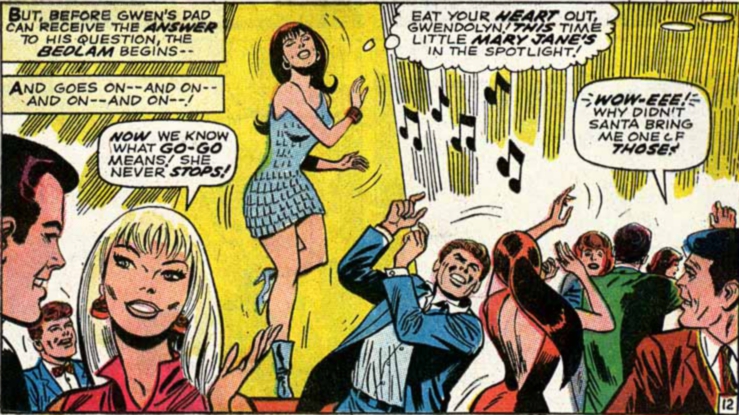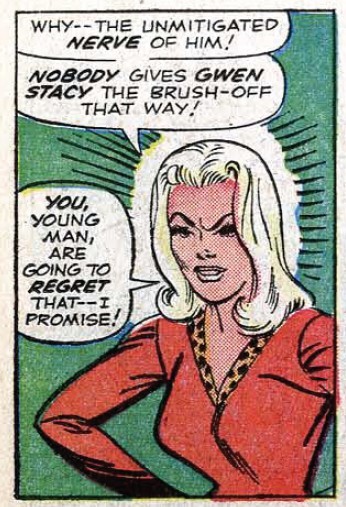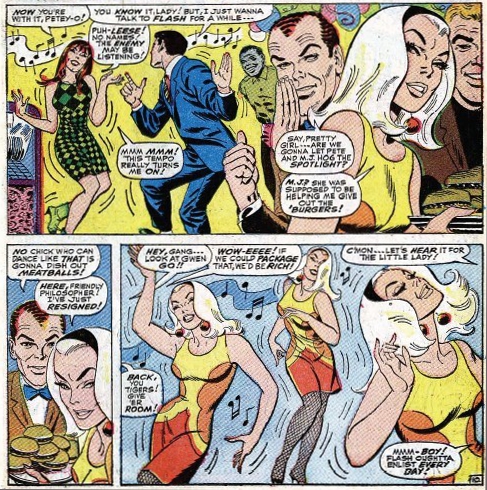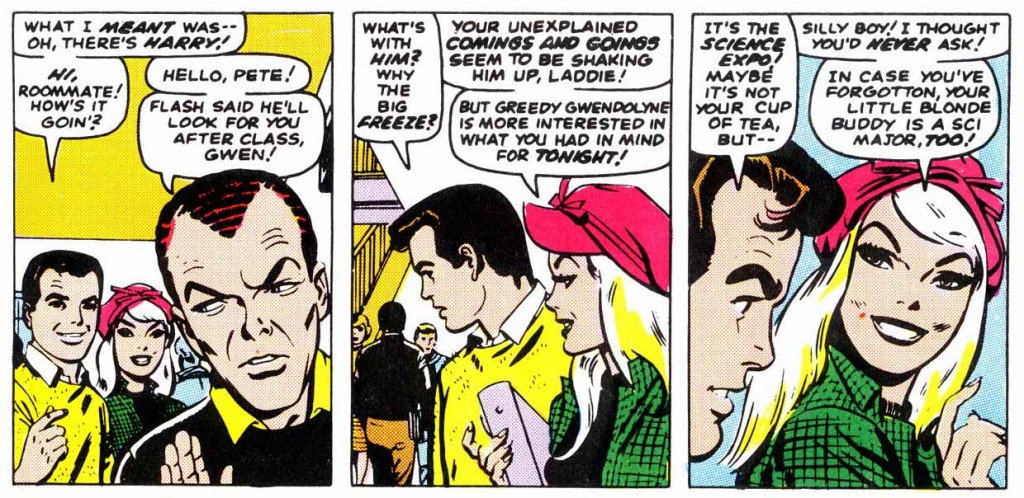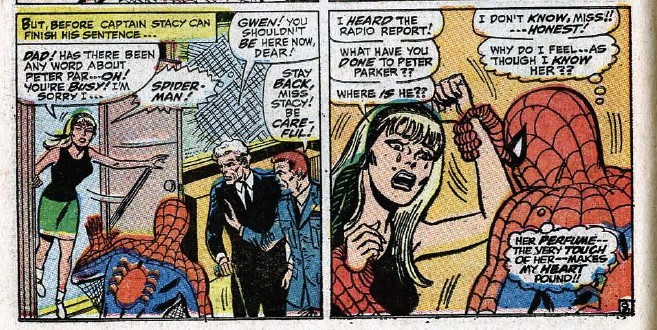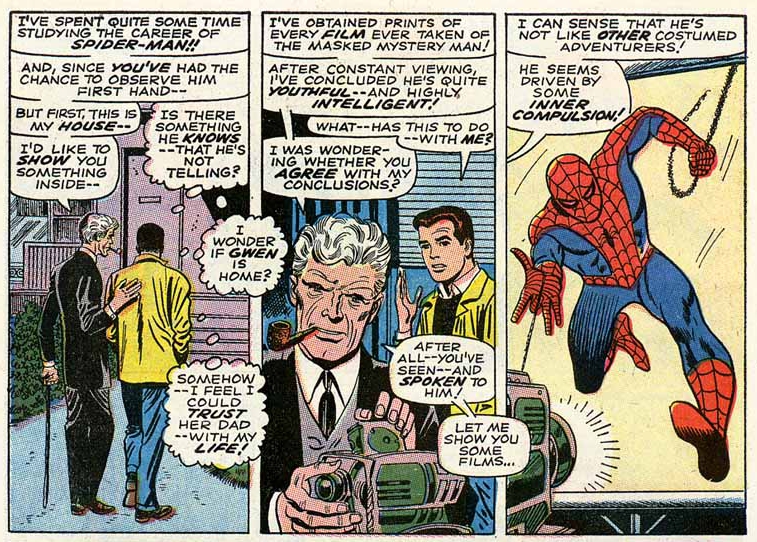If you’re just arriving, Part 1 of this series looking at the development of Gwen Stacy’s character can be found here.
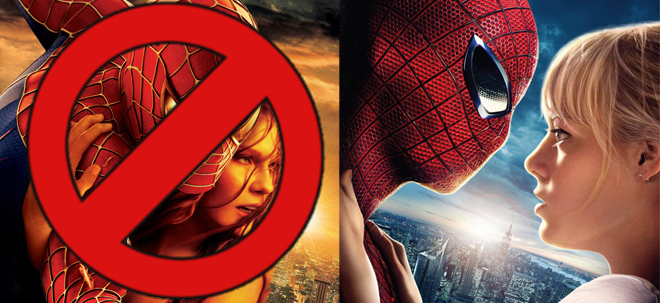 Of the many liberties that the new film, The Amazing Spider-Man takes with the original Marvel comic book storylines, the one most readily apparent from the very beginning of production was the complete excision of Mary Jane Watson, Peter Parker’s most enduring love interest and future wife. It was an unexpected choice. Insofar as many casual fans are concerned, Mary Jane is Peter’s one true romance, and has almost exclusively been the love interest in the past thirty years of comics, a trilogy of movies, and any number of animated films.
Of the many liberties that the new film, The Amazing Spider-Man takes with the original Marvel comic book storylines, the one most readily apparent from the very beginning of production was the complete excision of Mary Jane Watson, Peter Parker’s most enduring love interest and future wife. It was an unexpected choice. Insofar as many casual fans are concerned, Mary Jane is Peter’s one true romance, and has almost exclusively been the love interest in the past thirty years of comics, a trilogy of movies, and any number of animated films.
The choice to have Gwen Stacy be the lead female role in The Amazing Spider-Man must have been, in no small part, an attempt to break away from the precedent set by the Raimi films. However, utilizing a lesser-known character afforded the filmmakers the ability to adapt the character to their vision of Spidey. Gwen must have been a terribly attractive option. Whereas Mary Jane’s function in Peter’s character arc was to bring him out of his shell, Gwen was the character he had the most in common with from the get-go. Like Parker, she was academically talented, quick-witted, and often misunderstood by her peers. Peter’s true self was hidden by his self-effacing manner and less-than-impressive physique. Gwen, on the other hand, was often dismissed as just another pretty face.
In the film, this leads to an easy chemistry between the two characters, once they get over their initial awkwardness. In the comics, however, it results in constant tension and misunderstandings. Bringing Peter Parker and Gwen Stacy together required an outside catalyst.
We’ll just call her Mary Jane.
Toward the end of 1966, Spider-Man artist Steve Ditko left the character he had helped create. The world of Ditko’s Spider-Man was, in many ways, a bleak and depressing place, populated by freaks, where everyone was simply out to get our hero. A well-known recluse who had cut his teeth on horror, mystery and science-fiction comics, Ditko would go on to create increasingly strange, dark, surrealistic superhero comics after his departure from Amazing Spider-Man. Clearly he wasn’t the right artist to pull the series away from its creepy crawly roots.
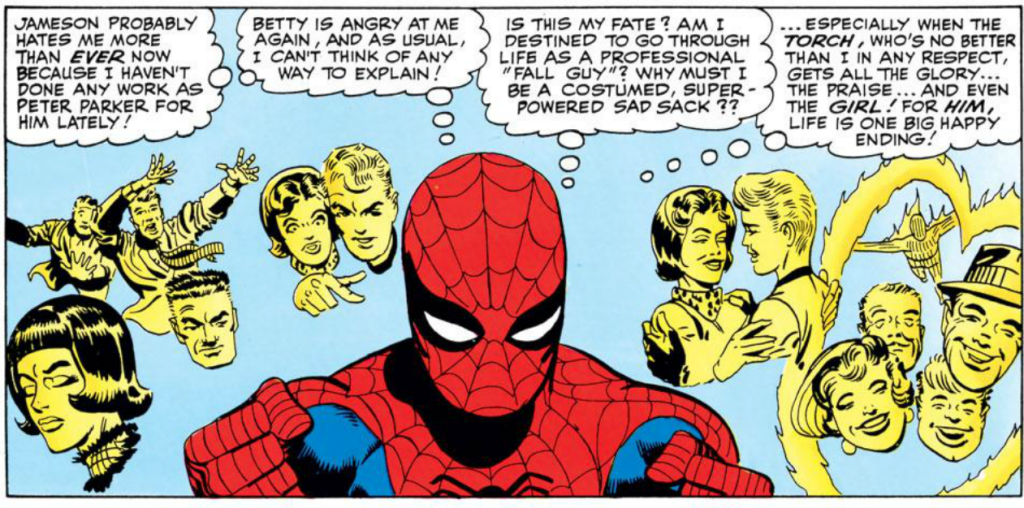
Why, God, why was I cursed with these big muscles, superpowers, and fantastic hair?
Art: Steve Ditko. Words: Stan Lee.
The Gwen Stacy that Ditko had co-created was very much in his standard mode: a mercurial – almost diabolical creature – who used her wit and wiles to manipulate those around her, and who was simultaneously repulsed and intrigued by the one man who seemed immune to her. Like the impish Harry Osborn, and the oaf Flash Thompson, Gwen was, despite her beauty, just another grotesque, albeit non-powered, antagonist to Peter.
When he left, purportedly amid a dispute that included his disagreeing on the more romance-oriented direction of the sub-plots, it was already well established that while there was a definite attraction between Peter and Gwen, it was hampered by a nearly insurmountable mutual enmity. Incoming artist John Romita and writer Stan Lee worked to resolve the issue in much the same way it was done in many of the romance comics Romita hailed from – a good, old-fashioned love triangle.
And so, at the end of ASM #42, we meet Mary Jane for the first time. Until the moment of her introduction, Peter is more preoccupied with winning over Gwen, who he’s convinced hates him, than with the dreaded blind date set up by his aunt and busybody neighbor.
Mary Jane enters the scene like a whirlwind, bowling over not just Peter, but also Harry and Flash with her free-spirited, nearly manic approach to things. She’s into Peter and more than willing to go out with him, but really, she’s more into life. Her primary motivation is to get to wherever the fun is; she almost doesn’t care who’s with her.
Gwen’s reaction to the new woman in their clique is less-than-stellar, to be frank. Where once she had the attention of every man within their circle of friends, now she feels threatened by Mary Jane’s arrival and, at least initially, tries her level best to out-do MJ in the popular party girl department. She’s not even doing it with a mind towards winning this or that guy. If anything, she just wants to get back her position as queen bee.
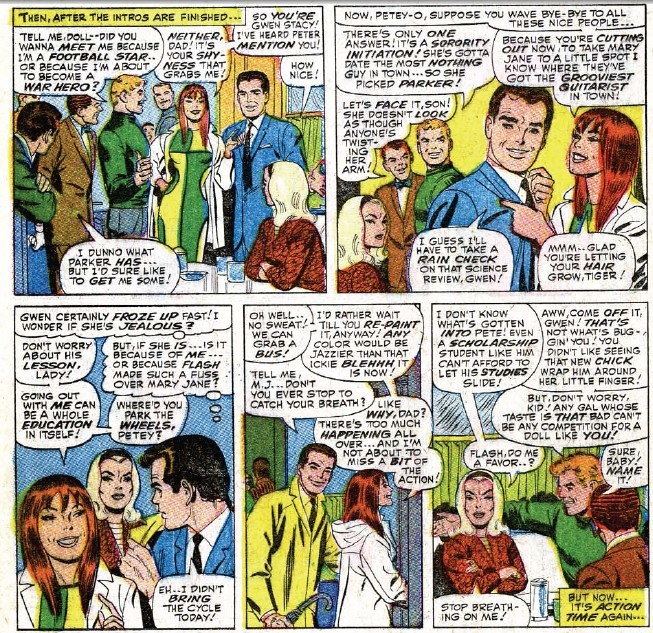
Guess keeping the scholarship takes a back seat to groovy guitar gigs, daddy-o.
Art: John Romita Sr. Words: Stan Lee.
The thing is, it doesn’t take. For all her snappy rejoinders, spirited dancing, and constant party throwing, she still has her school responsibilities, her drive, and her worry that this new girl is throwing Peter off track. In effect, the arrival of Mary Jane ushers in a new, somewhat more reflective Gwen who is more inclined to say what she’s actually thinking. This is the beginning of the kinder, gentler Gwen that fans are familiar with. She is the yang to MJ’s yin.
This is, in a way, the territory that the film version of Gwen stakes out – somewhere between the standoffish, scathing over-achiever and the compassionate, forthright nurturer of later issues. In the new movie, Gwen is just as capable of cutting Peter down with a well-chosen word and a withering stare as she is of comforting him or helping with a Spider-plan.
The film versions of Peter and Gwen don’t even get the opportunity to go on a real date before Peter’s double-life complicates things. The comics, however, having taken nearly two years to finally get Gwen and Peter to admit their mutual attraction, at least allowed the couple the courtesy of one real date before things went off the rails. (Granted, it was a chaperoned date ruined by Doctor Octopus, who would unwittingly end up being a major player in the relationship, time and again.)
With the romantic tension between the characters essentially deflated, the threats to their relationship now come from external pressures. Gwen feels very differently about Spider-Man and Peter. In a reversal of the way this trope typically plays out, she likes Peter, but doesn’t trust Spider-Man at all. At first, it’s mostly a question of whether a man in a mask has something to hide. But when Peter (as Spidey) is struck with amnesia and becomes convinced that he’s Doctor Octopus’ partner, things take a turn for the worse. Peter vanishes for days, after presumably pursuing Spider-Man in order to get photos for the Daily Bugle. Peter’s now-roommate Harry finds a Spider-Tracker in Peter’s room. This is enough circumstantial evidence for the circle of friends to assume that the wall-crawler is involved in Pete’s disappearance.
Although Spider-Man recovers from his memory loss, the damage is in many ways done. While he goes on to clear his name and save the day on multiple occasions, Gwen’s not sure whether web-head is a hero or a villain, and imagines he’s capable of nearly anything. Meanwhile, in her desperation to find Peter, she contacts her father, retired police captain George Stacy. Captain Stacy subsequently takes a great interest in Spider-Man, the mystery of his identity, and his motivations.
Pulling Peter Parker and Captain George Stacy into each other’s orbits will ultimately have dire consequences for all three characters.
By this point, it’s apparent that while the film took many of its cues for Gwen from her appearances in the 1960’s, there’s significant divergence once she and Peter are together. For example, in the movie, the distrust of Spider-Man is (in many ways, quite logically) shifted to Captain Stacy, while it falls upon Gwen to try and make the case that the he’s not a criminal, but a legitimate hero. Also significant is that the film has Peter reveal his secret identity to Gwen relatively early. This precludes much of the tension and misunderstanding that marred many of Peter Parker’s relationships, not just in the original comics, but also his film and animated appearances.
Having Gwen be in on Peter’s secret in the films may be, at least from a story perspective, what saves her life in this new series. She is aware of his role, and therefore aware of the danger to him and his loved ones. In Amazing Spider-Man, this lends Gwen an agency that most comic book girlfriends don’t have. Not only is she aware of the stakes and is therefore presumably less likely to be taken by surprise by, say, a supervillain kidnapping, she is able to actively help Spidey in his fight against the Lizard. And when Peter attempts to break off the relationship, she knows exactly why, and can actively make the decision to stand by him.
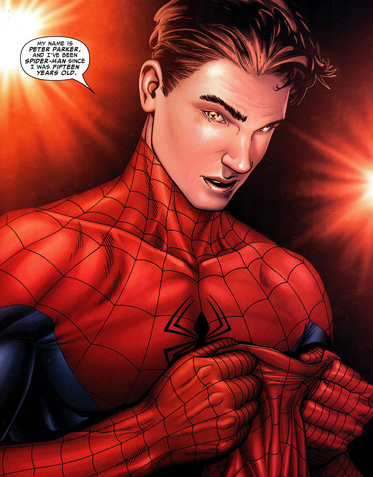
Best bit of Spider-Man character development of the 2000’s.
So much potential. OF COURSE it got retconned.
Civil War #5, Art: Steve McNiven. Words: Mark Millar.
Unfortunately for the original Gwen and Peter, superhero comics have long had a preoccupation with secret identities that has only recently began to loosen its stranglehold. The revelation of their identity has worried many classic superheros, and Spider-Man in particular, to the point of obsession. There’s also no denying that numerous instances in which their secrets are discovered by any number of villains despite heighten the drama. The Raimi films were quite diligent in this regard, with Spidey being unmasked practically every few minutes.
For the Marvel Universe Gwen, however, Peter’s lack of honesty would lead to heartbreak, mourning, and, eventually her death. In the next installment, I’ll detail how the webbing and the mask ended the lives of Gwen and Captain Stacey, bringing the Silver Age to a close, and forever darkening the tone of superhero comics.

